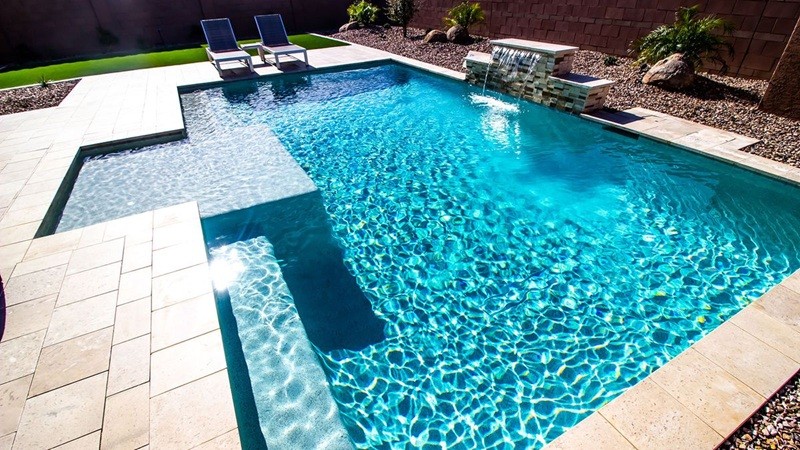Owning a pool is more than just having a water feature in your backyard—it is an investment in lifestyle, health, and enjoyment. A well-designed pool adds beauty to your property, creates opportunities for exercise, and provides a perfect space for family gatherings and relaxation. However, to maximize these benefits, it’s important to understand pool design choices, proper maintenance practices, and how to create a serene environment around it.
In this guide, we’ll explore every aspect of owning and enjoying a pool, including design considerations, essential upkeep, and ways to transform your pool area into the ultimate relaxation spot.
The Importance of a Pool in Modern Living
A pool is no longer just a luxury reserved for resorts or upscale homes. Increasingly, homeowners see pools as practical additions to their properties that enhance physical and mental well-being. Whether it’s swimming for exercise, cooling off in the summer heat, or simply lounging by the water, pools offer year-round benefits.
Beyond recreation, a pool can increase property value and improve outdoor aesthetics. For many, it becomes the centerpiece of backyard living.
Pool Design: Choosing the Right Style
Design is the foundation of any pool project. The choices you make in the early stages affect not only the look of your pool but also how much time and money you’ll spend on maintenance.
1. Types of Pools
There are several pool types to consider, each with unique features:
-
In-Ground Pools – Built into the ground using concrete, vinyl, or fiberglass. These offer a permanent, high-value option with endless customization.
-
Above-Ground Pools – Budget-friendly and easier to install, though they may lack the durability and aesthetic appeal of in-ground pools.
-
Infinity Pools – Designed to create the illusion of water flowing endlessly over the edge. Ideal for scenic properties.
-
Lap Pools – Long, narrow pools made specifically for exercise. A practical choice for fitness-focused homeowners.
-
Natural Pools – Incorporate rocks, plants, and natural filtration systems for a more eco-friendly approach.
2. Shapes and Layouts
The shape of your pool should reflect both function and style. Popular options include:
-
Rectangular Pools – Classic, elegant, and excellent for lap swimming.
-
Freeform Pools – Curved, irregular shapes that blend naturally into landscaping.
-
Geometric Pools – Sharp angles and contemporary aesthetics for modern homes.
3. Materials and Finishes
The surface finish contributes to durability and design. Choices include:
-
Plaster – Cost-effective but requires more maintenance.
-
Pebble Finish – Offers texture and durability with a natural look.
-
Tiles – Sleek, customizable, and long-lasting.
4. Surrounding Features
Don’t overlook pool surroundings. Decks, lighting, and landscaping enhance functionality and create a relaxing environment.
Pool Maintenance: Protecting Your Investment
Once your pool is installed, maintaining it is essential for safety, appearance, and long-term durability. Poor maintenance can lead to costly repairs, unsafe water conditions, and an unpleasant swimming experience.
1. Water Quality Management
Keeping pool water balanced is critical. Regularly test for:
-
pH Levels – Should remain between 7.2 and 7.8.
-
Chlorine – Keeps water clean and safe by killing bacteria.
-
Alkalinity – Stabilizes pH balance.
-
Calcium Hardness – Prevents damage to pool surfaces and equipment.
2. Filtration Systems
A pool’s filtration system removes dirt, debris, and contaminants. Clean or replace filters regularly to ensure efficiency.
3. Cleaning Routines
Create a schedule to:
-
Skim leaves and debris daily.
-
Brush walls and floor weekly to prevent algae.
-
Vacuum the pool weekly or as needed.
4. Seasonal Maintenance
-
Summer – More frequent cleaning due to heavy use.
-
Winter – Properly close and cover the pool in colder climates to prevent freezing damage.
5. Professional Assistance
Hiring pool service professionals can save time and ensure expert-level care, especially for complex systems or large pools.
Relaxation: Turning Your Pool into a Retreat
A pool is more than a place to swim—it’s a retreat. With the right touches, you can transform your pool area into a private oasis.
1. Comfortable Poolside Seating
Lounge chairs, hammocks, and shaded daybeds create inviting spaces for relaxation.
2. Landscaping for Ambience
Use plants, flowers, and decorative rocks to enhance natural beauty. Palm trees, ornamental grasses, and low-maintenance shrubs create a tropical or resort-like feel.
3. Lighting for Evenings
LED lights, floating pool lamps, or underwater fixtures add elegance and extend pool use into the night.
4. Outdoor Amenities
Consider adding:
-
Fire pits for warmth and social gatherings.
-
Outdoor kitchens or bar areas for entertaining.
-
Water features such as fountains or waterfalls for calming sounds.
5. Mindful Design for Relaxation
Create a space that encourages mental peace—quiet corners with minimal noise, yoga decks by the pool, or shaded cabanas for reading.
Health and Wellness Benefits of Having a Pool
Pools offer more than leisure; they contribute significantly to overall health and wellness.
-
Physical Fitness – Swimming is a full-body, low-impact workout that improves cardiovascular health and muscle strength.
-
Stress Relief – Being near water naturally reduces stress levels.
-
Family Bonding – Pools provide quality time for families and friends.
-
Mental Well-Being – Relaxing by the pool fosters mindfulness and relaxation.
Cost Considerations and Budget Planning
A pool is a long-term investment, and budgeting wisely is key.
-
Installation Costs – Vary depending on type, size, and materials (in-ground pools can range from $35,000 to $100,000+).
-
Maintenance Costs – Chemicals, energy bills, and regular servicing may average $1,200–$1,800 annually.
-
Enhancement Costs – Features like lighting, landscaping, or heating systems can increase expenses but add long-term value.
By planning ahead, you can strike a balance between affordability and the pool of your dreams.
Sustainable Pool Practices
Eco-conscious pool ownership is becoming increasingly popular. To reduce environmental impact, consider:
-
Installing energy-efficient pumps and heaters.
-
Using solar covers to retain heat.
-
Choosing saltwater pools instead of chlorine.
-
Harvesting rainwater for pool refills.
These sustainable practices not only protect the environment but can also reduce long-term costs.
Final Thoughts
A pool is more than a luxury—it’s a lifestyle upgrade. With thoughtful design, diligent maintenance, and relaxation-focused enhancements, your pool can become a haven of joy and wellness. Whether you use it for fitness, family time, or unwinding after a long day, a pool has the potential to enrich your daily life.
This guide to design, maintenance, and relaxation tips offers a roadmap to help you get the most out of your investment. By prioritizing good planning, consistent care, and mindful enjoyment, you can create a backyard retreat that serves you for years to come.

